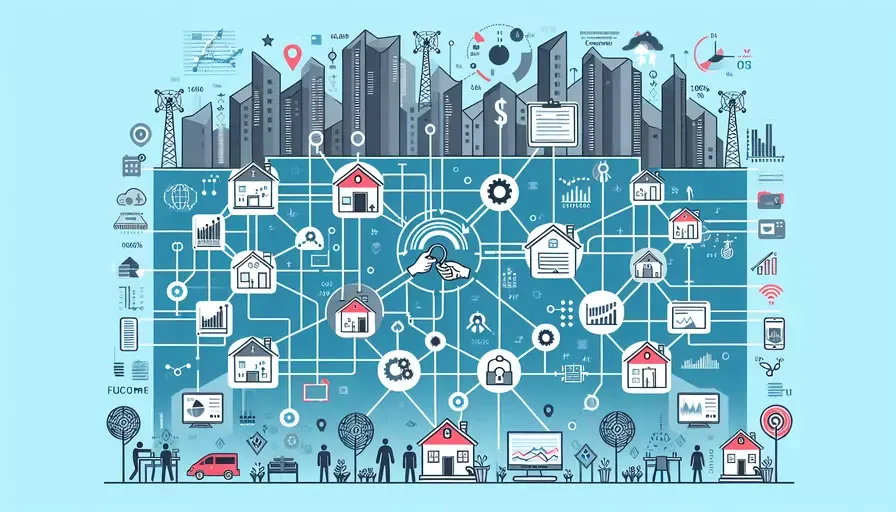The editor of Downcodes will give you an in-depth understanding of the core of the sharing economy - collaborative consumption. This article will comprehensively interpret the essence of the sharing economy from the concepts, forms, advantages and related FAQs of collaborative consumption, and explain its important significance to social economy and environmental protection. Let’s explore this new consumption model and how it is changing the way we live.

The core of the sharing economy is collaborative consumption. Collaborative consumption refers to obtaining the right to use goods at a lower cost through sharing, exchanging, borrowing, renting and purchasing used goods. This model breaks through the traditional "buyout" consumption model, allowing one product to be transferred among multiple consumers, greatly improving the efficiency of resource use.
In the context of the sharing economy, consumers are no longer passive recipients, but can maximize the use of resources through their own choices and sharing. This consumption model not only reduces the economic burden of individual consumers, but also contributes to the rational allocation of social resources and environmental protection.
1. The concept and characteristics of collaborative consumption
Collaborative consumption is the core of the sharing economy, and its fundamental feature is "sharing." This sharing is not only the sharing of material resources, but also the sharing of knowledge, skills and time. The emergence of collaborative consumption is based on the development of information technology and changes in people's values such as environmental protection and community participation.
Under the collaborative consumption model, consumers can obtain and use resources already owned by others through a series of behaviors, such as leasing, exchanging, and sharing. This model greatly improves the efficiency of resource use and allows consumers to enjoy a high-quality life at a lower cost.
2. Forms of collaborative consumption
Collaborative consumption takes various forms, including shared accommodation, shared transportation, shared office, shared learning, etc. These forms of sharing are all conducted on the Internet as a platform and through mobile applications, websites, etc.
For example, Airbnb, a representative of shared accommodation, provides a platform where hosts and tenants can communicate directly to share housing. Another example is Uber, a representative of shared transportation. It allows drivers and passengers to connect directly through mobile applications and realize vehicle sharing.
3. Advantages of collaborative consumption
The advantages of collaborative consumption are mainly reflected in the following aspects:
First, collaborative consumption can improve resource usage efficiency. Through sharing, exchange, etc., resources can be circulated among more people, avoiding idleness and waste of resources.
Secondly, collaborative consumption can reduce consumers’ economic burden. Because consumers only need to pay for the use of resources and do not need to bear the ownership of resources, they can enjoy a high quality of life at a lower cost.
Thirdly, collaborative consumption can promote the construction and development of communities. Through sharing, exchange and other methods, consumers can establish connections with others and enhance the cohesion of the community.
Finally, collaborative consumption can contribute to environmental protection. Because the shared consumption model can reduce resource consumption and thereby contribute to environmental protection.
In general, the core of the sharing economy is collaborative consumption, which allows resources to be transferred among multiple consumers through sharing, exchanging, borrowing, leasing and purchasing used goods, greatly improving the efficiency of resource use. In this process, consumers can not only enjoy a high-quality life, but also contribute to the rational allocation of social resources and environmental protection.
1. What is the core concept of the sharing economy? The core concept of the sharing economy is collaboration. It advocates people to achieve mutual assistance, cooperation and common interests by sharing resources and skills. This collaborative model can lead to more efficient resource utilization, wider social exchanges and more sustainable economic development.
2. How does the sharing economy achieve collaboration? The sharing economy connects supply and demand through online platforms and technological tools, allowing people to share idle items, jointly use resources, collaborate in entrepreneurship or provide services. In this way, people can help each other, create value together, and maximize the use of resources.
3. What are the advantages of the collaboration model of the sharing economy? The collaborative model of the sharing economy has multiple advantages. First, it can provide cheaper services and products because resources are better utilized and costs are reduced. Second, it promotes social interaction and communication, bringing people closer together. Most importantly, the collaborative model of the sharing economy contributes to environmental protection and sustainable development, reducing resource waste and environmental pollution.
I hope this interpretation by the editor of Downcodes can help you better understand the sharing economy and collaborative consumption. Let us look forward to the vigorous development of the sharing economy and contribute to building a better future!